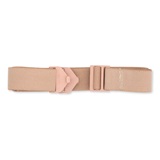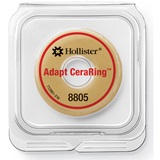Seeing Red? Four Common Types of Skin Irritation and When to Contact an Ostomy Nurse
If you’re experiencing redness, itching, or pain near your stoma, it’s important to seek help.

Learn about the common causes of peristomal skin irritation.
By Linda Coulter, BSN, MS, RN, CWOCN
Ideally, the skin around your stoma should be healthy, intact, and look the same as the skin on other areas of your belly. Unfortunately, this is not always the case. At the first signs of redness, itching, or pain near your stoma, contact your wound ostomy continence (WOC) nurse. They are experienced in identifying the cause of the irritation and knowing how to correct it. Some healthcare clinics now offer virtual visits, which can make it easier for you and your WOC nurse to solve the problem.
When you speak to your ostomy nurse, they will ask questions to determine how urgent the situation is. In some cases, you will need to make an appointment as soon as possible. Other times, they will give you recommendations to try to correct the condition at home. Then, if the situation doesn’t improve after a pouch change or two, you’ll need to make an appointment.
Urgent situations include suspicion of stoma infection or large, painful sores on the skin around your stoma. Signs of a stoma infection include a red, hard, warm, or hot area, with or without drainage. These conditions require the attention of a physician or nurse practitioner, as well as a WOC nurse. The former will prescribe medications and may drain the area, while the ostomy nurse will recommend temporary dressings and ostomy pouching products to use while the skin heals.
There are four common types of skin irritation near the stoma. Each has a specific appearance and feel. Whether you need to see your ostomy nurse or not will depend on how severe the condition is. Here’s how to recognize and take steps to solve these problems:
- Exposure to stoma output – When stoma output sits on the skin, it can cause redness and burning, and make the skin raw. A key to preventing this skin breakdown is wearing an ostomy pouch that fits properly, and using the right ostomy accessories – such as barrier rings, stoma paste, and ostomy belts. After evaluating your stoma and abdomen, your stoma nurse can recommend the best ostomy products for you – to not only protect your skin, but also improve your pouching system wear time.
- Sensitivity to ostomy products – If the skin around your stoma is red, itching, and somewhat moist or weepy, it could be a reaction to the ostomy products you’re using. The shape of the red area can be a clue to the cause of the sensitivity. Is the red area the same shape as your skin barrier? If so, you can try a barrier with a different formulation. Is the redness only under the tape collar of the skin barrier? Tape-free barriers are available. If you need help identifying alternatives, your stoma nurse or a representative from the ostomy product manufacturer can help.
- A fungal or yeast rash – A fungal rash on the skin can also result in redness and itching. However, the rash’s red or pimple-like bumps or patches are usually scattered irregularly around the stoma and often extend beyond the edge of the skin barrier. A fungal rash can occur with the recent use of an antibiotic for an infection. It can also occur when the barrier and tape collar get wet and rest on warm skin. The skin’s natural flora can grow excessively in these warm, moist conditions. To prevent fungus overgrowth, keep your skin dry. Consider using a pouch cover or a stoma wrap to wick moisture away from your skin when exercising or doing yardwork. Your doctor or stoma nurse may recommend treating the rash with an anti-fungal powder. More severe rashes may require an oral medication.
- Irritated or infected skin follicles – Folliculitis, which is an infection of the hair follicles, also looks like pimples, and can itch and be crusty. Again, depending on the degree of the infection, your nurse may recommend steps like using adhesive removers and clipping the hair around your stoma to clear this condition. In severe cases, medications may be needed.
If you have redness, itching, or pain around your stoma, look for clues to the cause, and take steps to correct it. And don’t hesitate to contact your wound ostomy continence nurse, who is trained to recognize these problems and knows how to solve them.
Linda Coulter has been a certified Wound, Ostomy, and Continence Nurse since 2010 and currently cares for patients at University Hospitals’ Ahuja Medical Center in Beachwood, Ohio. Linda has presented on Ostomy Care in the United States and abroad, and is a clinical instructor for the RB Turnbull School of WOC Nursing. She is a regular contributor to The Phoenix, the official publication of the United Ostomy Associations of America, and serves on that organization’s Medical Advisory Board.
Financial Disclosure: Linda Coulter received compensation from Hollister Incorporated for her contribution to this article.
- 6 Shares
- 40 Recommended





 Call Us
Call Us  Email Us
Email Us  Join Us!
Join Us!  Sign Up
Sign Up 